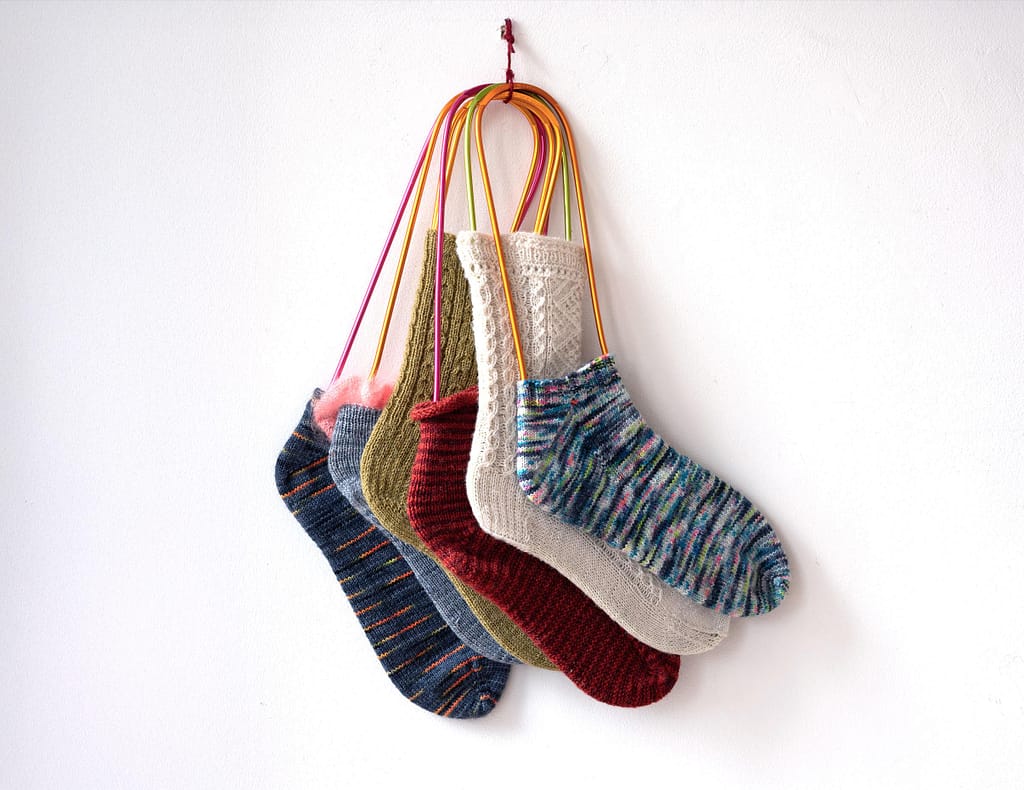Sock Knitter

Yarn
Unlike anything else we knit to wear, socks are going to be stretched tightly over our feet and then walked on. Again and again and again. We don’t ask our sweaters, hats and scarves to put up with this treatment, but socks need to stand up to all manner of abuse. For this reason sock yarn must be strong: spun from wool that has some robustness, tightly twisted and plied, and commonly also blended with a little strengthening artificial fibre such as nylon or ramie. For ordinary socks that can be worn in shoes rather than thicker walking socks, a regular 4ply (fingering weight) thickness with roughly 400m to 100g is just right
Needles
Making socks durable is also about how we knit them. Your socks will last longer if the stitches are worked snuggly and don’t have too much room to move around and rub against each other.
This means knitting at a tight gauge of around 28 stitches to 10cm using needles which are a whole millimeter smaller than the size you’d ordinarily use for a garment or accessory – usually 2.25 or 2.5mm if you’re using 4ply yarn.
Circular knitting without seams has a special role to play with socks – afterall no one wants to feel the ridge of a seam inside their sock as they walk. But managing circular knitting on the circumference of a foot comes with its own – even if small – challenges. Luckily we have options. The one which is right for you comes down to something very personal to do with your hands and the shape and feel of materials you like. You can read more about small circumference knitting options here.
Magic Loop
For sock novices, we recommend starting with the widely-used Magic Loop method using an 80cm long circular needle. Once you’ve mastered the Magic Loop, it will serve you well for sleeves and tops of hats too, and the needles are equally practical for shawls and bodies of sweaters.
Shorties
Not feeling the magic of the Magic Loop? Shortie asymmetric circulars might be the best alternative – like ordinary circular needles, only much, much shorter – so no excess cable to pull through the stitches. You’ll need to be a little patient during the first few rounds as your hands adjust to holding the ultra-short needle tips with your finger tips instead of your whole hands.
DPNs
Or take the 3rd way and knit your socks as they’ve been knitted by generations of sock knitters before us. These Double Pointed Needles allow you to distribute your stitches across 2, 3 or 4 needles and knit off with another. Choose from bendy, curvy or traditionally straight.



















